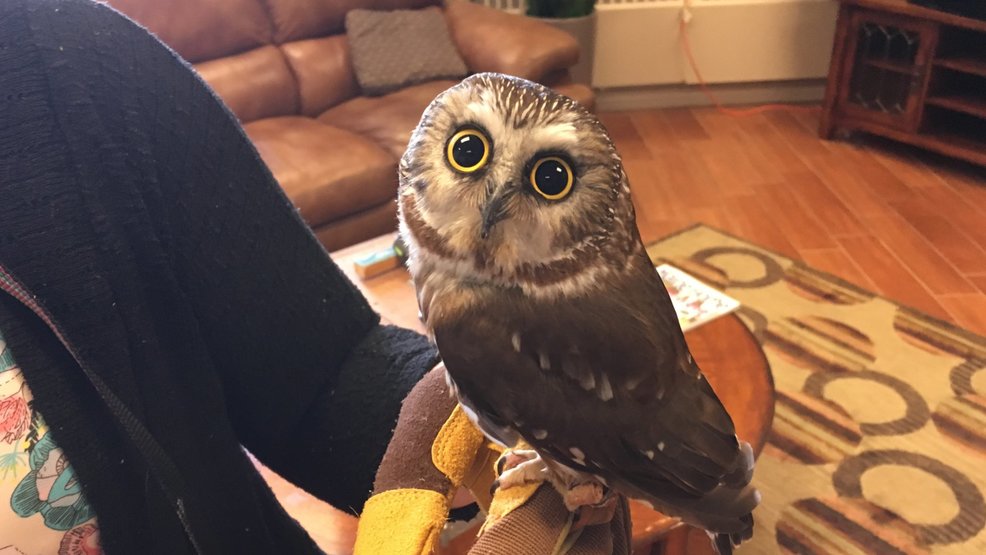The avian world, replete with creatures of varied sizes and habits, consistently captivates human interest. Among the most enigmatic and alluring of birds are owls, often regarded for their nocturnal prowess and haunting calls. When considering owls, one might immediately picture a majestic Great Horned Owl or a wise Barred Owl, yet lurking within the order Strigiformes is a contender for the title of world’s smallest owl: the Elf Owl.
The Elf Owl, scientifically classified as Micrathene whitneyi, immediately distinguishes itself through its diminutive stature. Averaging a mere 5 to 6 inches in height and boasting a wingspan of approximately 15 inches, this petite predator is comparable in size to a house sparrow. Their weight is equally negligible, typically hovering around 1.5 ounces. These measurements underscore the Elf Owl’s ranking as a contender for the title of smallest owl species globally, a distinction often debated with other diminutive owl species.
Geographical Distribution and Habitat: The Elf Owl’s range is largely confined to the arid regions of the southwestern United States and Mexico. Specifically, these minuscule raptors inhabit areas of Arizona, New Mexico, Texas, and parts of California, extending southward into central Mexico. Their preferred habitats include desert scrublands, canyons with riparian vegetation, and saguaro cactus forests. The presence of suitable nesting cavities, primarily abandoned woodpecker holes in saguaros or sycamores, is a critical determinant of their distribution.
Physical Characteristics: Beyond their size, several physical characteristics contribute to the Elf Owl’s unique charm. Their plumage is predominantly grayish-brown, providing effective camouflage against the bark of trees and the arid landscapes they inhabit. They possess relatively long legs for their size, which aid in capturing prey on the ground. Their eyes, a piercing yellow, stand out against their dusky facial disc, granting them exceptional nocturnal vision. Lacking ear tufts, they present a rounded head profile, adding to their endearing appearance.
Nocturnal Behavior and Diet: As true to their Strigiformes classification, Elf Owls are predominantly nocturnal creatures. As dusk settles, they emerge from their daytime roosts to embark on their nightly hunts. Their diet consists primarily of insects, including moths, beetles, crickets, and grasshoppers. They are also known to consume scorpions, spiders, and occasionally, small vertebrates such as lizards. Their hunting techniques involve a combination of perch-hunting, where they patiently observe from an elevated vantage point, and ground-foraging, where they actively pursue prey on foot. Their agility and sharp talons make them formidable predators, despite their small size.
Vocalization: Elf Owl vocalizations are far from the hooting commonly associated with larger owl species. Their calls are characterized by a series of high-pitched, chattering notes, often described as sounding like a yapping puppy. These vocalizations serve multiple purposes, including territorial defense, mate attraction, and communication between family members. The distinctiveness of their calls aids in their identification, especially in areas where they coexist with other owl species.
Nesting and Reproduction: The Elf Owl’s nesting habits are intrinsically linked to the availability of pre-existing cavities. As secondary cavity nesters, they rely on abandoned woodpecker holes, natural tree hollows, or even man-made structures for nesting sites. Their breeding season typically commences in late spring or early summer. The female lays a clutch of 2 to 5 eggs, which she incubates for approximately 21 to 24 days. The male provides food for the female during incubation and later assists in feeding the owlets. The young fledge, or leave the nest, at around 28 to 32 days of age. Post-fledging, the juveniles remain dependent on their parents for several weeks, learning essential hunting and survival skills.
Conservation Status and Threats: The Elf Owl is currently listed as Least Concern by the International Union for Conservation of Nature (IUCN), indicating that the species is not presently facing immediate threats to its global population. However, several factors pose potential risks to their long-term survival. Habitat loss, due to urbanization, agriculture, and resource extraction, is a primary concern. The removal of saguaro cacti and mature trees, critical for nesting sites, can significantly impact local populations. Pesticide use, which can reduce insect populations, also affects their food supply. Climate change, with its associated shifts in precipitation patterns and temperature regimes, could further exacerbate these challenges. Conservation efforts aimed at preserving their habitat and mitigating these threats are essential to ensure the continued viability of Elf Owl populations.
Adaptations to Arid Environments: The Elf Owl’s success in arid environments is attributable to a suite of remarkable adaptations. Their nocturnal lifestyle helps them avoid the intense daytime heat and conserve water. Their efficient kidneys minimize water loss through excretion. They derive much of their water requirements from their insect prey. Their plumage provides insulation against both heat and cold. These adaptations collectively enable them to thrive in harsh desert ecosystems.
A Symbol of the Desert: The Elf Owl, despite its diminutive size, occupies a significant ecological niche and holds a special place in the hearts of those who appreciate the biodiversity of the southwestern deserts. Its presence is an indicator of ecosystem health, and its charming nature endears it to birdwatchers and nature enthusiasts alike. By understanding and appreciating these miniature marvels, we can contribute to their conservation and the preservation of the unique habitats they call home. The Elf Owl reminds us that size is not the ultimate determinant of ecological importance, and that even the smallest creatures can play a vital role in the intricate web of life.
